I was on my second to last long run before the Big Cottonwood Canyon Marathon, 13 miles. It was early on an August Saturday morning so not too hot and I was doing well with my LSD pace. All of a sudden, on the flat stretch of my local trail with about 2 miles left to go, my left hip seemed to twerk out from under me. I felt a stabbing pain in my hip that seemed to shoot around my glute and hamstring area. I slowed down a little. The pain kept on. I limped and hopped and kicked my legs up behind me to try and shake it out but the pain persisted. I did something I never do and stopped and stretched. Stopping seemed to make it worse and after a brief stretch I powered through the painful final stretch home. Continue reading
Tag Archives: IT Band
Pilates for Runners: Interview with Lynda Lippin
Twitter has been, and continues to be, an amazing resource for me in both my personal and professional endeavors. On a daily basis I connect with new people on twitter who are informative, inspiring, entertaining, and motivational, and who share their passions, resources, ideas, challenges, and solutions with their followers. In the health, running, and fitness facets of my life this has been incredibly helpful as I have had many of my own questions answered by others on Twitter and have been able to constantly find information of interest to me as well as share my own stories and experiences with like-minded followers.
One of the first people I connected with on Twitter is Lynda Lippin, a Pilates instructor in the Caribbean. After a while of tweeting back and forth and learning various Pilates tips from her, I decided to interview her for this blog and asked if she’d be willing to discuss the topic of Pilates for runners to which she enthusiastically agreed. Following is the interview which I found insightful and helpful and hope you will too. Continue reading
Thresholds: Heart Rate Help
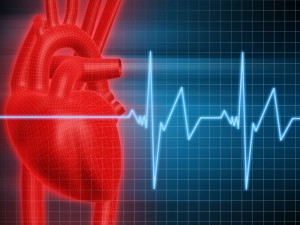 At the suggestion of a friend of mine who is an NSPA-certified instructor, I got a Polar heart rate watch last fall to help me train better. I read the Polar user manual and it was obvious the watch does a lot more than what I am ready to do in my training (different alarms for speedwork, a variety of lap settings, etc), and while I haven’t delved into the watch’s many functions, I did set it up to monitor my heart rate. My “own zone” is 65-85% of normal heart rate and I am almost always above the max.
At the suggestion of a friend of mine who is an NSPA-certified instructor, I got a Polar heart rate watch last fall to help me train better. I read the Polar user manual and it was obvious the watch does a lot more than what I am ready to do in my training (different alarms for speedwork, a variety of lap settings, etc), and while I haven’t delved into the watch’s many functions, I did set it up to monitor my heart rate. My “own zone” is 65-85% of normal heart rate and I am almost always above the max.
I thought maybe it would be helpful to switch from the percent of heart rate to the actual heart rate setting thinking I would have a better idea of how I’m doing if I knew my actual heart rate. I do like seeing the HR rather than the percent of HR, however, I’m still not clear on what the numbers actually mean. For example, I did a 4.05 mile run with the watch beeping at me almost the entire time. My HR limits were 162/124 and I was only in my zone for 8 minutes of that run. Oddly, the rest of the time I was below my zone with an average HR of 120 despite the fact that my time on this run was the fastest I’ve had yet for that route. How could my HR have been so low when I was actually running faster?
Realizing the number of questions I have, I decided it was time to do some more reading. I turned to Polar’s website as well as an extremely helpful document called Optimal Results, a heart rate training program that was developed in 1994 by Dave Ruff, the National Personal Training Director for TFC Partners and owner of Ruff Fitness. In reading through the training articles on Polar’s website, I learned that I probably should first monitor my resting HR and then set up my own limits based on that number in order to properly conduct heart rate training. Continue reading
Crossing the Bridge
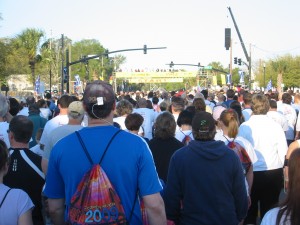 The Cooper River Bridge Run in Charleston, South Carolina, is by far one of my most favorite events. It’s not just the 10K run that I love, but every aspect of an event that the city embraces and that becomes a complete experience for anyone participating, watching, or just living in Charleston. I’m a College of Charleston alumni and for some reason I didn’t do the race all four years of undergrad, but I did get started during junior year. Once I graduated, the Bridge Run was the perfect excuse to visit Charleston and my first year returning for the race I brought my now husband with me where we rendezvoused with my best friend for the weekend.
The Cooper River Bridge Run in Charleston, South Carolina, is by far one of my most favorite events. It’s not just the 10K run that I love, but every aspect of an event that the city embraces and that becomes a complete experience for anyone participating, watching, or just living in Charleston. I’m a College of Charleston alumni and for some reason I didn’t do the race all four years of undergrad, but I did get started during junior year. Once I graduated, the Bridge Run was the perfect excuse to visit Charleston and my first year returning for the race I brought my now husband with me where we rendezvoused with my best friend for the weekend.
It was then that the Bridge Run became a tradition for us, just like it has for so many of the other 40,000 runners. Registration sells out quickly so we make a point to sign up as early as our schedules allow. Like many events (though not many road races that I’ve done), the Bridge Run follows up with you once you’ve registered with regular email blasts giving training advice, information about travel, updates on the city, reminders for race day, and all the while builds the hype for a spectacular running event. Continue reading
Little Victories
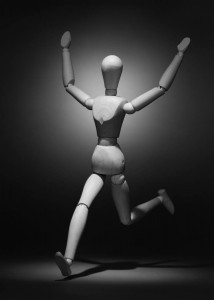 By now you are probably tired of reading about issues surrounding my IT band and I don’t blame you! I’m tired of dealing with it but the whole journey of feeling the most frustrating pain ever, dealing with it, treating it, and now finally feeling as though I’m going to get through it is hard not to write about. It seems like a strange addiction to be constantly reading about other people’s experience with ITBS, but it’s comforting to know I’m not alone and I hope that what I write brings information, comfort, and hope to others as well.
By now you are probably tired of reading about issues surrounding my IT band and I don’t blame you! I’m tired of dealing with it but the whole journey of feeling the most frustrating pain ever, dealing with it, treating it, and now finally feeling as though I’m going to get through it is hard not to write about. It seems like a strange addiction to be constantly reading about other people’s experience with ITBS, but it’s comforting to know I’m not alone and I hope that what I write brings information, comfort, and hope to others as well.
Despite the excruciating experience of my recent deep tissue sports massage, I truly think it helped. It also showed me where I need to focus with the foam roller and I have to believe more concentrated rolling is also making difference. Why do I believe change is actually happening? Because this morning I did a slow and steady 20-minute jog around a quaint and peaceful neighborhood in North Carolina and felt no pain. Zero, zilch, nada. Continue reading
Finding The Knots
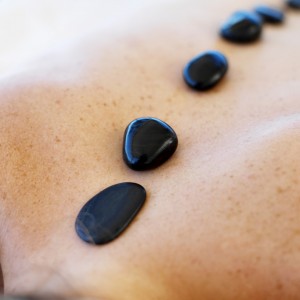 There are several names that came to mind for this post: “That’s the Spot!” “Ouch!” “Digging Deep,” “Seven,” and plenty of others, some of which sounded totally inappropriate and others that could be misleading. So as not to leave you wondering what all these possible post names relate to, they are tied to the deep tissue sports massage I had over the weekend.
There are several names that came to mind for this post: “That’s the Spot!” “Ouch!” “Digging Deep,” “Seven,” and plenty of others, some of which sounded totally inappropriate and others that could be misleading. So as not to leave you wondering what all these possible post names relate to, they are tied to the deep tissue sports massage I had over the weekend.
I have had one other true massage in my life and it was the most amazing, relaxing, comforting, soothing experience ever. My sports massage was the absolute opposite. After talking to some personal trainers and reading plenty of articles and forum posts about various ways to “treat” IT band pain, I was convinced that I needed to see a massage therapist. It made sense to me that if the masseuse could not find anything wrong with the muscles in my leg then I would have a much larger problem at hand. So I dug out a gift card waiting to be used and made an appointment for a 60-minute deep tissue sports massage at a local spa and salon.
I was shown into a cozy room with candles lit, calming melodic music playing, and I snuggled under wonderfully heated sheets thinking how nice it would be to doze off while the massage therapist fixed all my IT band problems. Continue reading
Building a Strength Routine: Legs
I am happy to say that I have been sticking with the strength routines that I put together just a week ago. It helps that I have a lot of exercises to choose from so I can vary the routines for the various muscle groups which will hopefully keep me from getting bored. Though I think I like working my arms the best, I understand the importance of strengthening all the muscle groups to improve running performance. After reading a fantastic and detailed article about IT Band Syndrome (perhaps the best one I’ve read yet), it’s even more clear how critical having strong legs and glutes are to preventing injury.
Unfortunately, I don’t love leg exercises; in fact, I loath them. For a long time I thought that running was all the leg exercise I needed until I started learning more about training, strength, performance, injury prevention, and realized that successful running and overall fitness is best achieved by a combination of routines and exercises. The following leg exercises are from the 2007 SELF Challenge and Runner’s World and have the added bonus of working multiple muscle groups. You will notice that lunges are missing from my leg routine though they are part of some other muscle group exercises. Continue reading
And I Would Walk…
Sing it with me! I would walk 500 miles and I would walk 500 more! And tonight I could have. A girlfriend invited me to join her for an after work power walk leaving from the greenest building in Annapolis (Chesapeake Bay Foundation) and doing a 3-mile loop along the waterfront flanked by gorgeous houses.
My friend has got some muscles on the mend from past triathlons and has mastered the art of power walking during her recovery. She set us out at a good clip and even the dog could barely keep up, but soon we all fell into stride and were cruising along the curving road. Given her experience with power walking I noticed her form was a bit more practiced than mine. I could feel my legs wanting to go into run mode so I concentrated on planting my feet and lengthening my stride. With a dog leash in one hand my arms weren’t pumping at the most efficient angles and I could tell that I wasn’t focusing much on my core either. Continue reading
First Marathon: What Went Wrong
 One of the things I have enjoyed most about having run a marathon is how much I learned along the way. I am very aware that I have barely scratched the surface of most topics related to running and training and I find it encouraging that there is always something new to learn about the sport. Part of running is science and understanding how the body works and how all the muscles work together, and part of running simply personal and figuring out what works best for you.
One of the things I have enjoyed most about having run a marathon is how much I learned along the way. I am very aware that I have barely scratched the surface of most topics related to running and training and I find it encouraging that there is always something new to learn about the sport. Part of running is science and understanding how the body works and how all the muscles work together, and part of running simply personal and figuring out what works best for you.
Training
Considering I was able to finish the marathon, I think it’s safe to say that not that much went wrong, but there are certainly some lessons learned from this first experience and some things I will do different next time. I’ve mentioned before that my running friend and I took a 16-week plan and crammed it into nine weeks. Definitely lesson number one. Continue reading
First Time Reflections
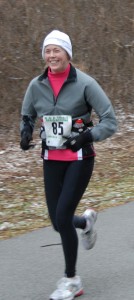 This morning as I was walking down the stairs sideways, slowly, holding on to the railing, and feeling each step in my knees and ankles I smiled knowing that for all this pain I would not change having just run my first marathon less than 24 hours ago.
This morning as I was walking down the stairs sideways, slowly, holding on to the railing, and feeling each step in my knees and ankles I smiled knowing that for all this pain I would not change having just run my first marathon less than 24 hours ago.
There are still so many thoughts and emotions swirling in my head that I really don’t know where to start with this post. I want to write about the marathon from start to finish, and perhaps I will in another post. From training to the pre-race meals and planning to the morning of preparation, stretching, pace and form while running, gear, and post-race plans, I learned a lot and discovered many more questions that I have about this whole experience that is running.
For now, though we’ll just stick to the points closest at hand from running my first marathon.
The Weather
We got lucky with the weather. Early forecasts were calling first for 60% chance of rain in 37 degrees and the chance of rain slowly changed to 30%, then 10%, and by race morning, the rain had cleared, temps were in the low 30s and it was clear for the first 13 or so miles and then light snow started to fall which was actually pretty cool. Continue reading

